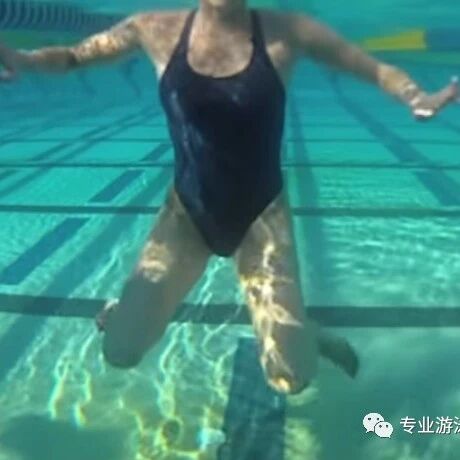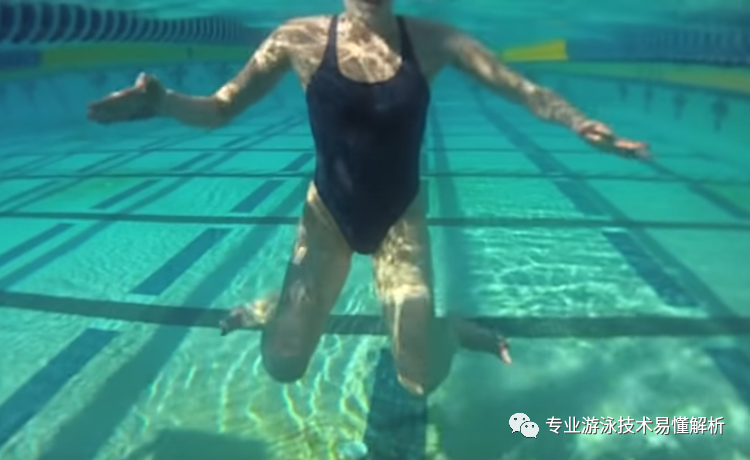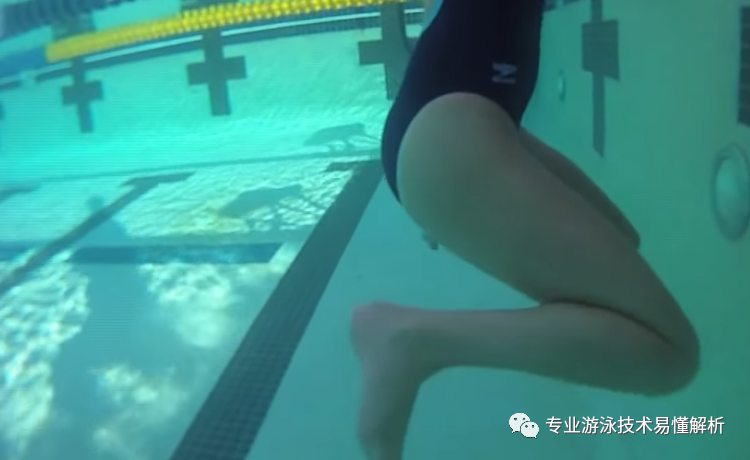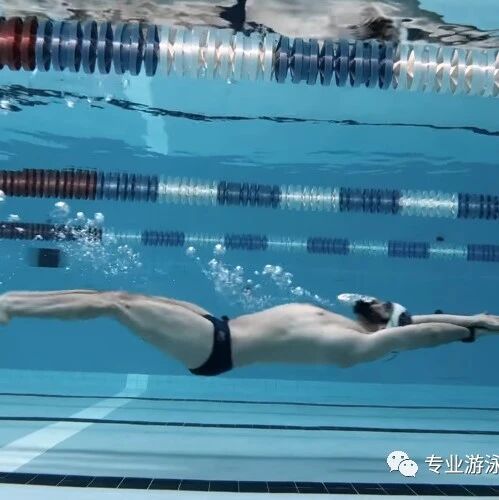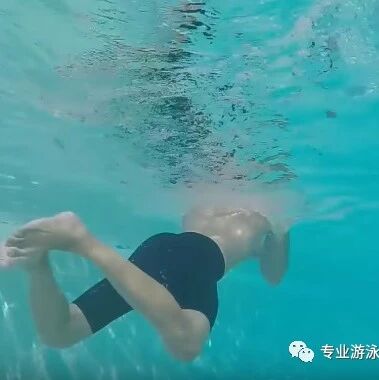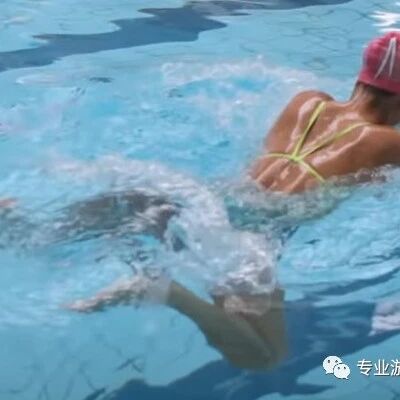Swimmers with experience in open-water swimming will surely love the exhilarating, liberating feeling of being immersed in nature—an experience that far surpasses the joy of swimming in a pool. Before venturing into open water, it’s essential to master the skill of treading water and become comfortable swimming in deeper areas.The basic requirement for mastering the sculling skill is being able to comfortably and effortlessly perform sculling for 3 minutes in the water. Some swimming pools issue deep-water certificates after just 2 minutes of successful sculling, allowing swimmers to enter deeper areas. However, considering the possibility of encountering unexpected situations, it’s recommended to set the 3-minute mark as the minimum standard for demonstrating sculling proficiency. For beginners just starting to learn sculling, being able to maintain the technique for even 1 minute or longer is already a great achievement—though the key lies in mastering a few essential sculling techniques.
1. When first learning, you must master the coordinated use of your hands and feet.
The basic breaststroke sculling involves a leg movement similar to the frog kick in breaststroke—essentially, it’s like performing an upright version of the traditional frog kick. The key is to flip your feet and then push the water downward, but avoid applying too much force. Rushing into the downward kick can quickly lead to leg fatigue and overall exhaustion. Instead, consciously slowing down the motion just slightly during the push will help you achieve better buoyancy while preventing your body from bobbing up and down unevenly.When first learning to scull, raising both hands above the water isn’t a good idea. Before you can effectively control the direction and depth of your sculling motion using your legs and core muscles, it’s essential to practice the traditional rowing motion—keeping your arms beneath the surface. This helps swimmers maintain balance and easily adjust their body position as needed. The sculling motion involves first sweeping your palms outward until your shoulders are fully open, then reversing the motion by pulling inward. Importantly, both during the outward and inward strokes, your palms should remain at a 30- to 45-degree angle relative to the water’s surface—this angle maximizes the downward pressure you exert on the water, propelling you forward efficiently.
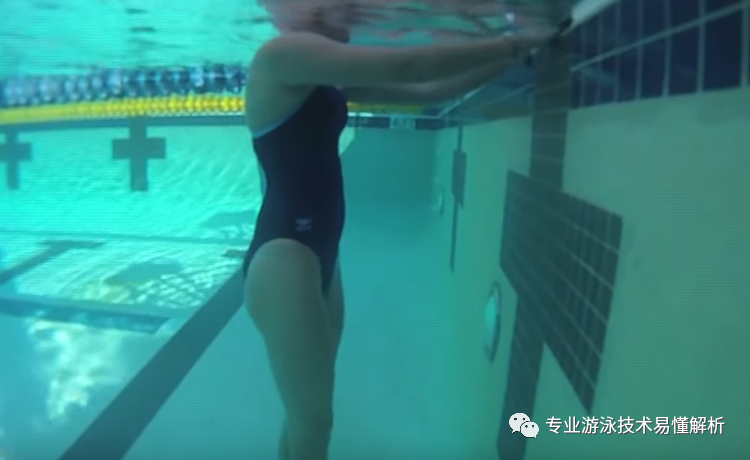
2. When performing the float, move calmly and steadily.
When first learning to scull, swimmers often worry about not being able to stay afloat. As they submerge deeper into the water, they instinctively start paddling harder—using excessive force, moving too quickly, and even straining to stretch their necks upward. Unfortunately, these are all incorrect techniques.
It’s perfectly fine at first if your body doesn’t immediately float to the surface. The key to mastering sculling is learning to relax during practice—rather than focusing on lifting your body out of the water, which can feel counterintuitive. That’s why choosing the right deep-water area is crucial. Once you’re fully submerged, simply wait until your feet touch the bottom, gently tap the surface with your toes, and then smoothly resume your sculling motion.
When performing the breaststroke kick, slow down your movements and focus on the surface area and angle of your feet as they push against the water. At the same time, use your arms in a rowing motion to help maintain body balance. Whether you're kicking both legs simultaneously or alternating kicks, always push the water downward and outward—never backward. Some swimmers inadvertently move their bodies forward during the kick simply because they’re directing their kicks in the wrong direction.
3. When doing the float, sit back with your body.
A key aspect of sculling is ensuring your core remains gently engaged while you move through the water. To achieve this, avoid keeping your body completely upright—instead, adopt a stance similar to a traditional "zhanmubu" martial arts stance. Many beginners instinctively try to perform sculling movements with their bodies too straight and upright, often exerting significant effort yet failing to generate effective propulsion. The reason? Their bodies aren’t properly aligned or contracted. In fact, when sculling, your upper body should lean slightly forward, almost as if you’re about to sit down—this helps maintain balance and efficiency in the movement.
It's not recommended to practice treading water while holding onto the pool edge, as this prevents you from fully experiencing the buoyancy of the water on your body. Instead, it only diminishes the effectiveness of your practice and makes it harder to master the skill of treading water efficiently.
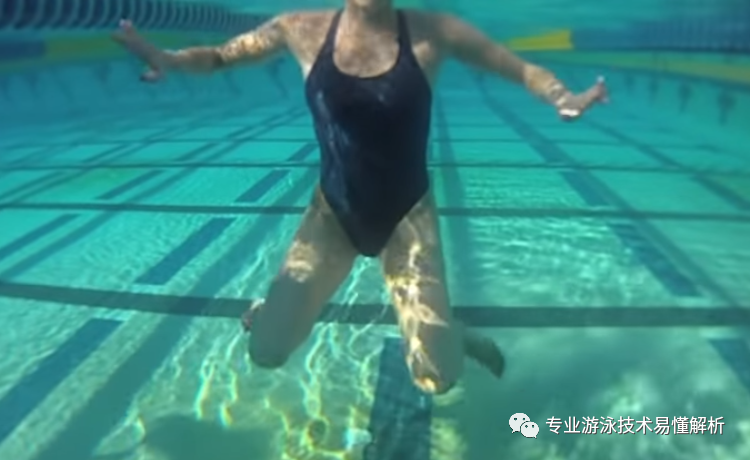
After mastering the coordinated foot-and-hand sculling motion, proceed to practice sculling exercises using only your hands or only your legs—further refining your sculling skills.
